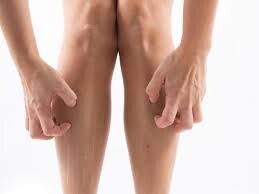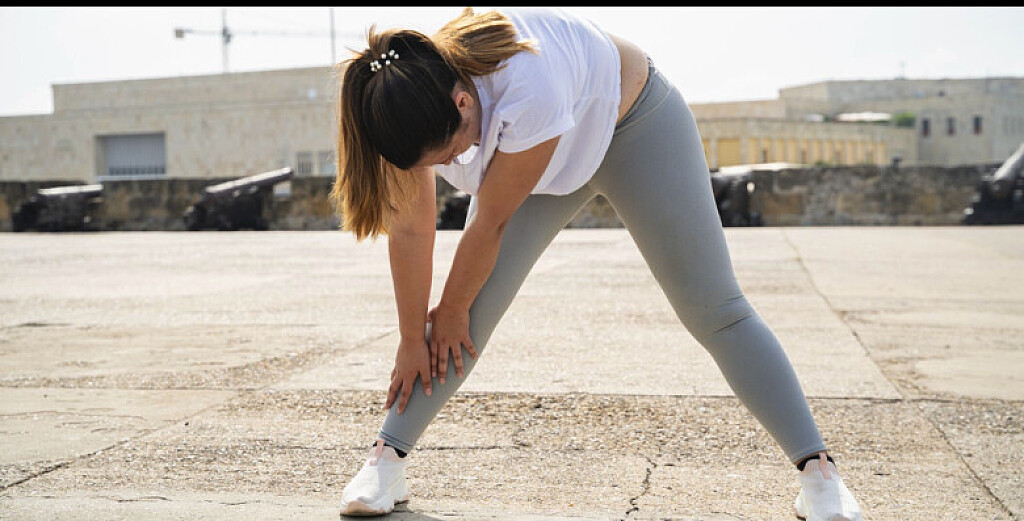Running News Daily
Running News Daily is edited by Bob Anderson. Send your news items to bob@mybestruns.com Advertising opportunities available. Train the Kenyan Way at KATA Kenya and Portugal owned and operated by Bob Anderson. Be sure to catch our movie A Long Run the movie KATA Running Camps and KATA Potato Farms - 31 now open in Kenya! https://kata.ke/
Index to Daily Posts · Sign Up For Updates · Run The World Feed
Why Do I Get So Itchy When I Run?
Here’s what experts say about the causes of that uncomfortable, tingling sensation and how to cope with it.
As a runner, you try to prepare for everything: You have a waterproof jacket for that 60 percent chance of rain, anti-blister socks, and a supply of gel packs for Saturday long runs. However, something that you may be less prepared for is relentless itching and tingling.

Known as “runner’s itch,” this sensation makes hitting the road uncomfortable for many runners, especially those just starting out or getting back into a running routine.
“Runner’s itch wasn’t something that was particularly researched and documented before the 1950s, but it’s been consistently described in literature in some way since about the 70s,” says Braden Romer, Ph.D., an associate professor of exercise science at High Point University in High Point, North Carolina. “We’ve seen the prevalence go up as there are more individuals taking part in physical activity. I run into it quite often when dealing with athletes.”
If you want to run more but can’t stand the urge to stop and scratch, here’s what to know about runner’s itch and how to soothe it.
What causes runner’s itch?
The causes of runner’s itch may range from minor inconveniences to more serious health conditions. Although more research is needed to fully understand what triggers this sensation, here are five potential causes.
1. Dry or Irritated Skin
Both humidity and dryness in the air can lead to runner’s itch.
“If you sweat a lot or if it’s very humid or raining, and your clothes get wet, you run the risk of skin irritation or itchiness,” says Melissa Kendter, C.P.T., a Philadelphia-based United Endurance Sports Coaching Academy (UESCA) running coach.
Meanwhile, another common cause is dry air and dry skin. Friction from running can exacerbate this and cause unpleasant itching.
“Some research has suggested hydration is a factor as well,” says Romer. “If you’re not drinking enough water, your skin gets dry and itches. When you begin to workout, especially with workout clothes, that may trigger an effect as well.”
Running can also exacerbate eczema, a group of inflammatory skin conditions that lead to issues like itchiness and dry skin.
“If you’re prone to eczema, exercise might make it worse,” says Minneapolis-based William Roberts, M.D. chief medical officer of the American College of Sports Medicine and former director of the sports medicine program at the University of Minnesota Medical School. “If you notice a skin rash, talk to your doctor.”
2. Histamine Release
A predominant theory behind runner’s itch is a histamine release at the onset of exercise, says Romer. Aerobic or endurance exercise can generate a localized anaphylactic reaction within the exercised muscle tissue, which causes histamine release, per a 2017 study in Exercise and Sport Sciences Reviews.
“There’s some research to suggest that the itching may be related to histamine release at the onset of exercise, particularly in high-intensity exercise,” Romer explains. “If somebody hasn’t been working out or running, or they haven’t warmed up and jump right into a high-intensity workout, that may be triggering a greater histamine release from within the muscle cells.”
This histamine release, in turn, could cause that uncomfortable and itchy feeling.
2. Blood Vessel Expansion
When you run, blood flow increases to your tissues, causing vasodilation (the widening of blood vessels). One theory is that the increased size of your capillaries causes an itching sensation.
“The capillaries start to expand, which may send a triggering response to some of the nerve fibers around that area,” says Romer. You may be more prone to this if you haven’t run for a while or are just starting out.
“This typically can happen for newer runners or ones getting back into the routine of running, because their bodies aren’t adept at this process,” says Kendter. “If your fitness routine has been put on the back burner for some time, you have a higher risk.”
However, this theory does have its skeptics. Romer adds that there are multiple pathways that have been proposed for runner’s itch and the symptom is not well understood. This was evident even in the differing opinions among the experts we spoke to—Roberts, for instance, has doubts that vasodilation could cause itching.
The bottom line: Though runner’s itch could potentially be related to blood flow, more research is needed to fully understand the mechanisms behind this process.
4. Exercise-Induced Urticaria
In more rare cases, allergic responses to exercise can cause severe symptoms. Exercise-induced urticaria is a rare clinical condition that causes flushing, itchiness, and hives after a workout, per a March 2022 single case study in Cureus. A minority of patients can even develop anaphylaxis, which is a severe, life-threatening allergic reaction.
“Exercise-induced anaphylaxis can cause a fast heart rate and potentially the swelling of the throat and blocking of the airways,” says Roberts.
About 30 to 50 percent of exercise-induced anaphylaxis is food dependent, meaning it only occurs with the combination of a specific food and exercise, per another single case study, published in 2017 in Canadian Family Physician.
Many different types of food have been found to have a triggering effect, including wheat, shellfish, nuts, tomatoes, peanuts, fish, pork, beef, mushrooms, hazelnuts, eggs, peaches, apples, milk, and alcohol.
If you suspect you’re experiencing urticaria, it’s important to see your physician to start a treatment program. This could include taking antihistamines before you run and carrying an EpiPen with you. If you do experience allergic reactions, it’s best to run with a buddy who knows how to help if you have a reaction.
People with severe cases of exercise-induced urticaria may need to avoid certain types of exercise and foods (or, rarely, exercise altogether).
5. Cholinergic Urticaria
Another condition that could be the cause of itching is cholinergic urticaria, which is characterized by itching and/or a stinging pain, redness, and bumps.
Think of this as a heat-triggered reaction: Symptoms develop after an increased body temperature has been stimulated repeatedly, such as through exercise, per a 2023 review in the American Journal of Clinical Dermatology.
“This is also pretty rare,” says Roberts. “It’s a response to the skin warming that occurs with running.”
Cholinergic urticaria is often associated with serious symptoms like anaphylaxis and severe pain. This condition comes on very quickly and may also involve an antihistamine treatment plan. Your doctor may conduct testing to confirm that you’re experiencing cholinergic urticaria, which may involve raising the body temperature through exercise on a treadmill or stationary bike.
Who’s most prone to runner’s itch?
When it comes to everyday runner’s itch that’s not related to a more serious medical condition like exercise-induced urticaria or cholinergic urticaria, runners who are just starting out or who haven’t exercised in a while may be more likely to experience it.
“I’ve seen this with athletes who have taken time off,” says Romer. “My wife also struggles with runner’s itch quite a bit. If she takes some time off from high-intensity runs for a bit, especially in the winter, it really gets after her for the first few workouts.”
If the itching is due to dry skin, factors like age, climate (think desert-like climates with low humidity or cold climates with heavy wind), genetics, or health conditions like eczema or diabetes can play a role, per the Cleveland Clinic. You may also experience more dry, itchy skin during the winter or if you’re not drinking enough water.
How can you sooth runner’s itch?
For many people, runner’s itch will fade away with regular exercise, unless it’s a symptom of a more serious condition. “It generally subsides relatively quickly after several workout sessions or modifying hydration intake,” says Romer.
You can also aim to soothe runner’s itch by properly easing into your run.“Do a good warmup so your body has a gradual increase in temperature and the blood gets flowing to the muscles in advance, rather than a rapid increase,” says Kendter.
Try to keep running throughout the year: Although the first couple of weeks may feel uncomfortable, if you stay consistent and allow your body to adapt to your routine, you’re less likely to experience the itch.
Staying properly hydrated and using a moisturizer to soothe dry skin can also help. Roberts recommends moisturizing creams like Vanicream, which is available over the counter.
All of this said, talk to your doctor if runner’s itch continues for you or if symptoms are severe—say, it’s accompanied by rash or hives, is extremely painful, or continues/worsens over time.
“If it becomes a chronic response, where you’re not seeing a diminished response even if you’ve been able to regularly exercise, see a physician,” says Romer.
by Runner's World
Login to leave a comment




